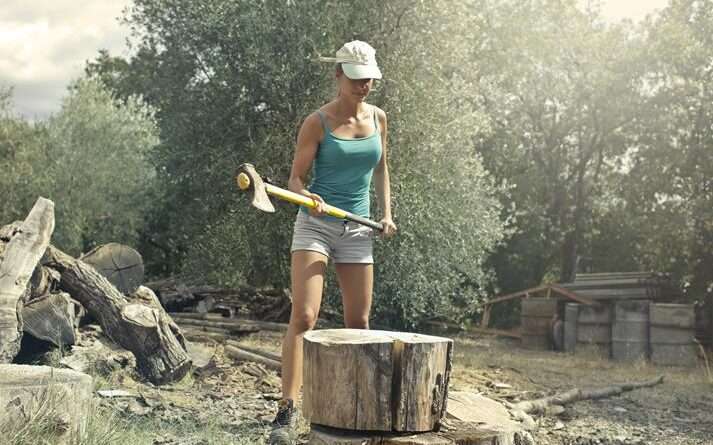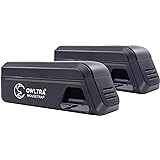
Are you longing for a warm and inviting fire to cozy up to on chilly nights? Look no further!
In this article, we will guide you through the ins and outs of firewood, teaching you how to choose, store, and use it effectively for the perfect fireside experience.
From the different types of firewood to consider, to proper storage techniques and tips for building and maintaining a cozy fire, we've got you covered.
Get ready to master the art of firewood for ultimate coziness!
Key Takeaways
- Hardwoods like oak or maple burn longer and produce more heat.
- Proper seasoning requires cutting and splitting firewood into manageable sizes and storing it in a well-ventilated area for at least six months.
- Store firewood in a covered area to keep it dry, stack it neatly to allow for proper airflow, and consider using tarps or firewood racks to protect the woodpile.
- Gather dry, seasoned firewood beforehand, clear the fireplace or fire pit of debris or ash, stack kindling in a crisscross pattern for better airflow, and gradually add larger logs as the fire grows.
Different Types of Firewood for Cozy Fires
You should consider using hardwoods like oak or maple for cozy fires because they burn longer and produce more heat.
Seasoning firewood is an essential step in ensuring optimal burning efficiency and reducing environmental impact. Seasoning refers to the process of drying out firewood to remove excess moisture. This is crucial because wet or unseasoned wood produces more smoke and less heat.
To season firewood properly, it should be cut and split into manageable sizes and then stacked in a well-ventilated area for at least six months. This allows the wood to dry thoroughly, resulting in cleaner and more efficient burning.
It's important to note that different types of firewood have varying environmental impacts. Hardwoods are generally more sustainable than softwoods as they take longer to grow and have a denser composition, making them burn longer and emit less smoke.
Factors to Consider When Choosing Firewood
When selecting firewood, it's important to take into account factors such as moisture content and density for optimal burning efficiency. To help you make the right choice, here are some key considerations:
- Moisture Content:
- Freshly cut firewood has a high moisture content, typically above 50%. This means it won't burn efficiently and will produce more smoke.
- Well-seasoned firewood has a moisture content of around 20%. It burns hotter, cleaner, and produces less smoke.
- Density:
- Hardwoods like oak and maple are denser than softwoods like pine and fir. Denser wood burns longer and produces more heat.
- Softwoods, on the other hand, ignite quickly and are great for starting fires.
When it comes to firewood sustainability, choosing locally sourced wood from renewable sources is essential. This ensures that forests are managed responsibly and that the environmental impact is minimized.
Proper Storage Techniques for Firewood
To ensure your firewood stays dry and ready for use, store it in a covered area and stack it neatly, using both tarps and firewood racks. Proper storage techniques are essential for maintaining the quality of your firewood and maximizing its burning efficiency.
First, find a well-ventilated space that offers protection from rain and snow. A shed or garage is ideal, but if those aren't available, consider using a tarp to cover your woodpile. Make sure to stack the wood in a way that allows for proper airflow, preventing mold and rot.
Firewood racks are also a great investment, as they elevate the wood off the ground, reducing moisture absorption. Additionally, it's crucial to properly season your firewood. This involves splitting the logs and storing them for at least six months to a year, allowing the wood to dry out and reach its optimal moisture content for efficient burning.
Tips for Building and Maintaining a Cozy Fire
How can you ensure your cozy fire stays warm and inviting throughout the evening? Here are some tips to help you build and maintain a perfect fire:
- Preparing for Success:
- Gather dry, seasoned firewood beforehand.
- Clear the fireplace or fire pit of any debris or ash.
- Starting the Fire:
- Stack kindling in a crisscross pattern for better airflow.
- Use newspaper or fire starters to ignite the kindling.
- Gradually add larger logs as the fire grows.
- Troubleshooting Common Fire Problems:
- If the fire is struggling to start, check for blockages in the chimney or poor airflow.
- If the fire is smoky, adjust the damper to increase draft and improve combustion.
- If the fire is too small or dying out, add more dry firewood and adjust airflow.
Common Mistakes to Avoid When Using Firewood
Are you making any common mistakes with your firewood that could be affecting the quality of your fires? Firewood safety is crucial for ensuring a clean, efficient, and enjoyable fire. Many people unknowingly make mistakes that can hinder their firewood's performance.
One common mistake isn't properly seasoning the wood. Freshly-cut wood contains too much moisture, leading to poor combustion and excessive smoke. It's essential to allow the wood to dry for at least six months before use.
Another mistake is storing firewood incorrectly. Wood should be stored in a well-ventilated area, off the ground and protected from rain or snow. Failure to do so can result in damp wood that's difficult to ignite.
Lastly, using improper wood sizes can affect the quality of your fires. Ideally, firewood should be cut and split into pieces that are approximately 16 inches in length and 3 to 6 inches in diameter.
Frequently Asked Questions
How Can I Tell if the Firewood I Have Is Seasoned and Ready to Burn?
To determine if your firewood is seasoned and ready to burn, there are some signs to look for. Check for cracks, lightweight feel, and a hollow sound when you knock two pieces together. These indicate properly seasoned firewood.
Are There Any Specific Safety Precautions I Should Take When Using Firewood Indoors?
When using firewood indoors, it's crucial to take specific safety precautions to prevent chimney fires. Ensure proper ventilation, use a fireplace screen, and keep flammable materials away. Stay cozy and safe!
Can I Use Wood From My Own Backyard for a Cozy Fire, or Should I Only Use Purchased Firewood?
You can definitely use wood from your own backyard for a cozy fire. However, there are benefits to purchasing firewood, such as ensuring it is properly seasoned and reducing the risk of pests or diseases.
What Is the Best Way to Start a Fire Using Firewood?
To start a fire using firewood, you can skip kindling and use different types of firewood. Start with smaller pieces of dry wood and gradually add larger logs. Ignite the firewood with a match or lighter.
How Often Should I Clean My Fireplace or Wood-Burning Stove When Using Firewood?
To maintain a clean fireplace or wood-burning stove while using firewood, it is important to establish a regular cleaning frequency. Follow these maintenance tips to keep your fireplace or stove in optimal condition.












